- poorlywrittennovel
- Oct 9, 2012
-

|
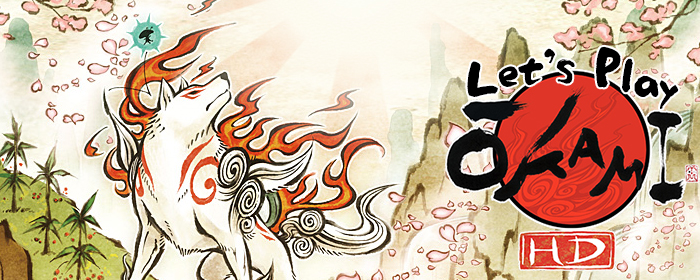

So let’s talk about Okami. Released originally in 2006 for the PS2, it was the last game by Clover Studio before the studio disbanded and several members went on to form Platinum Games. While it was generally highly praised by reviewers, it’s sales numbers were… not great. As in “considered a commercial failure” not great. Despite this, the game was ported to the Wii, and then later received an HD re-release for PS3. There’s also a DS sequel, but no one cares about that  . .
So how would you describe the actual game? Probably the best way to sum it up is “Zelda with a heavy coat of Japanese mythology.” The visual design is basically a sumi-e style painting brought to life, and it looks gorgeous in motion. The game isn’t without it’s flaws though, most of the complaints about it are generally about how drat long the game is. A regular playthrough can easily run you about 80 hours.
A quick note about the LP and the thread, I’ll be playing through the PS3 version with my good friends Tyty and Faerie Fortune. Fae’s never played the game before so the spoiler policy is  KEEP SPOILERS TO A MINIMUM KEEP SPOILERS TO A MINIMUM . This policy is subject to get harsher if I feel like we’re entering CIA document territory. With each episode Tyty and I'll try to point out the various references to actual mythology, and I encourage the thread to point out anything we miss. . This policy is subject to get harsher if I feel like we’re entering CIA document territory. With each episode Tyty and I'll try to point out the various references to actual mythology, and I encourage the thread to point out anything we miss.

 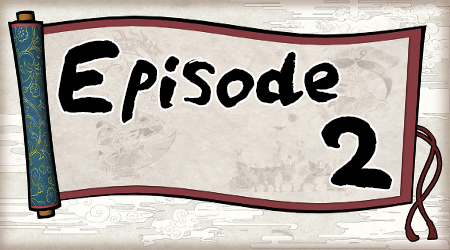
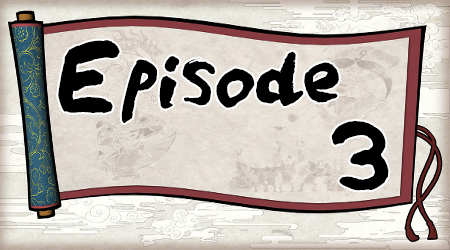 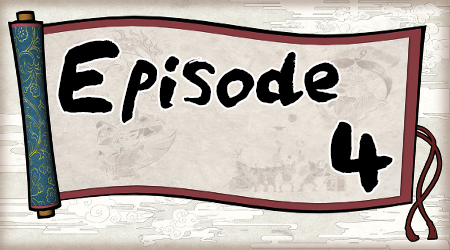
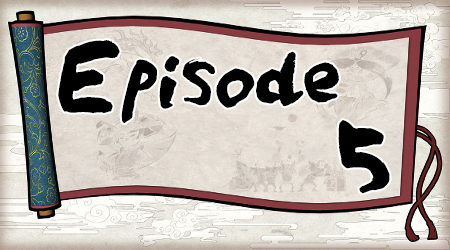 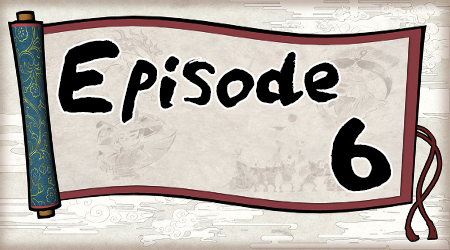
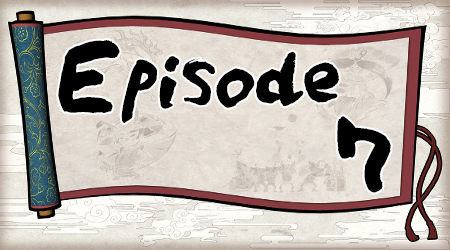
poorlywrittennovel fucked around with this message at 03:01 on May 11, 2017
|
 #
¿
Feb 7, 2017 03:21
#
¿
Feb 7, 2017 03:21
|
|
- Adbot
-
ADBOT LOVES YOU
|

|
|
#
¿
May 3, 2024 00:22
|
|
- poorlywrittennovel
- Oct 9, 2012
-

|
A really loving good post about how Okami does it's art. Seriously click that link.
poorlywrittennovel fucked around with this message at 03:04 on May 11, 2017
|
 #
¿
Feb 7, 2017 03:22
#
¿
Feb 7, 2017 03:22
|
|
- poorlywrittennovel
- Oct 9, 2012
-

|


Episode 1 is literally just the opening cutscene, episode 2 actually gets into the gameplay.
I missed the other LPs, so I'm glad you're playing through this one!
A couple things from episode 2:
Issun mentions the River of the Heavens in the video. The name in Japanese is 天の川 (あまのがわ, ama no gawa) , which you can see written on a stone. "River of the Heavens" is a pretty literal translation, but this is also the Japanese name for the Milky Way! And of course, it features in Japanese mythology. One such feature is in the tale of two deities Orihime and Hikoboshi. These lovers are separated by the Milky Way, but can reunite once a year. Their reunion is commemorated by the Tanabata festival in Japan.
The Japanese names of the gods use kanji characters that match their functions, and the kanji that appears when they give you their power is the first of their name.
- Yomigami is written 蘇神. 蘇 means "resuscitation", "revived" or such. It has a corresponding verb よみがえる (yomigaeru), "to be revived", which is probably where the pronunciation is from.
- Tachigami is written 断神. 断 means "cutting" among a whole bunch of other things. Its pronunciation is as the verb たつ (tatsu), "to sever or cut off".
All the names are gonna have 神 in them, which roughly means "god" or "divinity".
You also mentioned the word play for "wolf" and "god". In Japanese, the game is called 大神 (おおかみ, ookami), which is an archaic term for the "god". The word 狼, or "wolf", has the same pronunciation, which, well, that's the game right there.
Japan has a lot of word play, in no small part due to a large amount of homophones.
poorlywrittennovel fucked around with this message at 18:02 on Feb 11, 2017
|
 #
¿
Feb 7, 2017 03:22
#
¿
Feb 7, 2017 03:22
|
|
- poorlywrittennovel
- Oct 9, 2012
-

|
Okami is a game that I feel like I really should like but actually hate, and it's almost entirely because of the sheer length of the thing. There's at least one (probably two) points where you could have just stopped and rolled the credits, and no one would have known anything was wrong, but it doesn't. It just keeps going and drags out what would be an incredibly good and charming 20-30 hour game into an 80 hour one that wore out its welcome 30 hours ago.
There's a reason I like to joke that Okami is three of the best Zelda games. I feel like Clover knew this was going to be their last game, so they went and just made an entire series but released it as a single game.
|
 #
¿
Feb 7, 2017 13:49
#
¿
Feb 7, 2017 13:49
|
|
- poorlywrittennovel
- Oct 9, 2012
-

|
So one thing I forgot to mention, the first session of recording is probably going to look at least a little worse than future sessions due to the recording set-up we have going. Basically, Elgato sucks and doesn't let you run it in multiple programs, so for Fae and Tyty to get the game audio I either have to set up virtual audio cable, or stream the game to them without my local audio. We chose the latter option, and are using a service that has basically no delay other than the baked in delay from the capture card. The issue with doing it this way is that I have no way to locally record, so I have to download the VOD directly from the streaming service we're using. I think we got the graphics in a good place in our last session, but for this first one at least there's definitely going to be some rougher patches.
|
 #
¿
Feb 8, 2017 00:37
#
¿
Feb 8, 2017 00:37
|
|
- poorlywrittennovel
- Oct 9, 2012
-

|

Alternative episode title: "Put that dog back you rear end in a top hat"
There's a bunch of neat stuff in episode 3, and that's not even going into the mythology! Here's some of what I noted:
The icons that appear above the petrified villagers' heads look like Jizō statues... Those statues represent a buddhist divinity that's widely believed to be the guardian of children, in particular those who died before their parents. The divinity is also believed to watch over travelers. You can find these statues in many places in japan, with bibs or children's clothing put on as offerings. However, there are a lot of buddhist statues in Japan, so it's possible I mixed something up and that's some other statue that looks similar. Still, look at them:
  
When you draw the sun in the sky, it shows the kanji character 照, which means "illuminate". Not only that, it's part of Amaterasu's name in Japanese: 天照 (which is not her full name)!
Gaining praise shows the kanji character 幸, which means any of "happiness, blessing, fortune".
8:35 - The traveler's charm is basically a charm that you can get at Shinto shrines or Buddhist temples in Japan. Seriously, they're everywhere, and will cost you anywhere from $5 to  . They're meant to be burned/discarded at the lunar new year if you want to be super picky about it. . They're meant to be burned/discarded at the lunar new year if you want to be super picky about it.

9:29 - Some of the villagers have a weird face as their conversation icon. Those are henohenomoheji, and I'll let Wikipedia explain:
Wikipedia posted:
Henohenomoheji (へのへのもへじ) or hehenonomoheji (へへののもへじ) is a face drawn by Japanese schoolchildren using hiragana characters.
The word breaks down into the seven hiragana characters: he (へ), no (の), he (へ), no (の), mo (も), he (へ), and ji (じ). The first two he are the eyebrows, the two no are the eyes, the mo is a nose, and the last he is the mouth. The outline of the face is made by the character ji, its two short strokes (dakuten) forming the ear. Children use the henohenomoheji as the faces of kakashi (scarecrows).

The blue sake bottle you give to Susano has, unsurprisingly, the kanji character for "alcohol" written on it: 酒.
Susano's house has a scroll in the back, but that handwriting is way beyond my abilities. If someone has a bigger view, it might be decipherable.
26:55 - The merchant's shop has the characters for North, South, East, and West written on the cloth in the back, in their respective positions:
- North - 北
- West - 西
- South - 南
- East - 東
The merchant also has one of these on his back.
Finally, we've now been in a quite a few fights since last episode. You probably noticed that the walls of the arena are covered in kanji characters. It's hard to see all of them, but you can make out quite a few in the inner barrier such as:
- Demon - 鬼
- Disease - 病
- Dark - 暗
- Darkness/despair - 闇
- Curse - 呪
- Ward/zone - 区
- Hate - 憎
- Evil - 悪
The outer barriers have other kanji and words, but they use an older script, and are not as easy to view. I think they have "prohibited" (禁止) somewhere in there at least, as well as stuff like 外 and 来, "outside" and "come".
poorlywrittennovel fucked around with this message at 22:45 on Feb 11, 2017
|
 #
¿
Feb 8, 2017 23:15
#
¿
Feb 8, 2017 23:15
|
|
- poorlywrittennovel
- Oct 9, 2012
-

|
Anaxite your posts are super cool, is it okay for me to quote them in the relevant updates for future archival purposes?
|
 #
¿
Feb 10, 2017 23:05
#
¿
Feb 10, 2017 23:05
|
|
- poorlywrittennovel
- Oct 9, 2012
-

|

And this is the end of our first session. Videos should start getting longer from here on out.
Writing and culture notes for episode 4:
The cords around trees and objects are a Shinto tradition. I'll let Wikipedia explain this again:
Wikipedia posted:
Shimenawa (標縄・注連縄・七五三縄, "enclosing rope") are lengths of laid rice straw or hemp rope used for ritual purification in the Shinto religion. They can vary in diameter from a few centimetres to several metres, and are often seen festooned with zigzag-shaped paper streamers. A space bound by shimenawa often indicates a sacred or pure space, such as that of a Shinto shrine.
Shimenawa are believed to act as a ward against evil spirits and are often set up at a ground-breaking ceremony before construction begins on a new building. They are often found at Shinto shrines, torii gates, and sacred landmarks.
They are also used around yorishiro (objects capable of attracting spirits, hence inhabited by spirits). These notably include certain trees, in which case the inhabiting spirits are called kodama, and cutting down these trees is thought to bring misfortune. In cases of stones, the stones are known as iwakura (磐座、岩座?).
Here are some examples:
 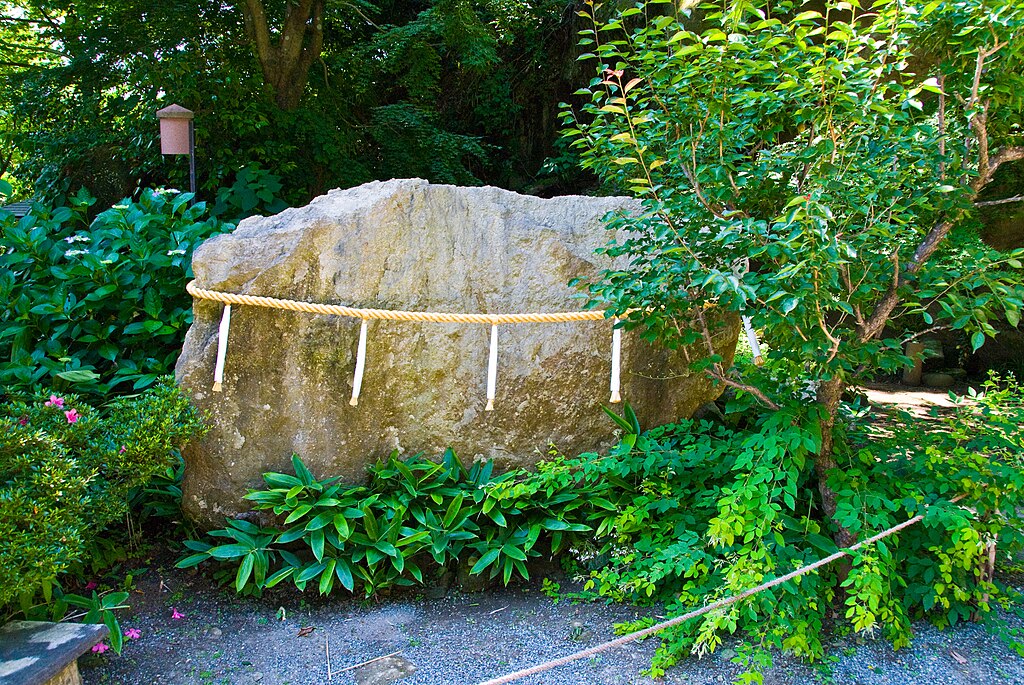
So yeah, all those in-game trees are holy or linked to spirits. Animism!
---
7:30 - A leaf on an animal's head is a pretty good indicator that it's some sort of magical creature. This may come from stories of tanuki that transform, and find it easier to do so if they place a leaf on their heads (so in a way, everything with a leaf may be a tanuki... according to some stories).
8:19 - The four kanji characters that appear, 素狭悩汚, can indeed spell out su-sa-no-o, but, uh... that arrangement is a bit unorthodox. The kanji roughly mean: plain - narrow - trouble - dirty. Sounds familiar?
New god names:
- Hanagami is written 花神. 花 means "flower", so those monkeys are all about the flowers. Sadly, no reference to musical instruments.
- Sakigami is written 咲神. 咲 means "bloom". Its pronunciation is as the verb 咲く (saku), "to bloom". Yep. That's it.
15:18 - Hey, those are some of the Jizo statues I was talking about! They're like some you'd find in real life.
---
By now, you may also have noticed the symbols written on the enemies' heads. Those are katakana, characters from one of the two Japanese syllabaries. At first I didn't know why they were there, but I learned that it's a power level indicator based on the iroha.
The iroha is an old Japanese poem which was composed around the Heian area; its first proof of existence was around 1079. The iroha is special for using each of the Japanese syllables only once so, among other uses, people have used it as an alternate method of ordering syllables (much like we order the alphabet).
We've now seen the first three power levels, fittingly イ (i), ロ (ro), and ハ (ha). Based on the poem, this is the order of enemies' power levels:
quote:
イ ロ ハ ニ ホ ヘ ト
チ リ ヌ ル ヲ ワ カ
ヨ タ レ ソ ツ ネ ナ
ラ ム ウ ヰ ノ オ ク
ヤ マ ケ フ コ エ テ
ア サ キ ユ メ ミ シ
ヱ ヒ モ セ ス
poorlywrittennovel fucked around with this message at 22:47 on Feb 11, 2017
|
 #
¿
Feb 11, 2017 18:01
#
¿
Feb 11, 2017 18:01
|
|
- poorlywrittennovel
- Oct 9, 2012
-

|
I never really made the association of "Leaf on head" -> "This bear is magic" but it does make some stuff related to that bear make more sense. The thing about the "iroha" marking the power level of the basic enemies is really cool, and actually does seem to play directly in to a later segment.
|
 #
¿
Feb 11, 2017 21:52
#
¿
Feb 11, 2017 21:52
|
|
- poorlywrittennovel
- Oct 9, 2012
-

|
Cool. I never watched further into the game, so I look forward to it.
I also found out that there's more symbolism with the monkeys and instruments, but I'll wait until we see all three to point it out. If I remember.
e: Also it looks like when I quoted wikipedia, it broke quoting me. I'll send you my raw posts!
Nah, don't worry about it, I'll just fix it and keep an eye on it in the future.
And yeah, the music in general for this game is great, and it's part of the reason we're using such a weird and convoluted recording set-up. if anything though, this game is loud. Like editing the audio usually involves finding the fights and dropping the music volume down considerably so it isn't overpowering anyone speaking. It's only the combat too, everything else is relatively fine.
|
 #
¿
Feb 11, 2017 22:50
#
¿
Feb 11, 2017 22:50
|
|
- poorlywrittennovel
- Oct 9, 2012
-

|
I wish you'd use the thick brush button for restoration. The quick line button is good for cuts, but it's a little easy to mess up with it so I'm not as fussed about that.
I actually forget that the thick brush exists half the time. It's basically useless outside of restoration so it just kind of slips my mind.
|
 #
¿
Feb 13, 2017 17:02
#
¿
Feb 13, 2017 17:02
|
|
- poorlywrittennovel
- Oct 9, 2012
-

|

Fae tells a story about a badger. Also a quick note, I'm aware of the weird visual glitch in this episode, it only happens the one time and I'm still looking in to ways to work out the back-end so stuff like that doesn't happen.
Writing and culture notes for episode 5:
05:10
The gates you enter to fight demons have this written on them: 羅城門 - Rajōmon. The Rajōmon, also called Rashōmon due to some plays, was a gate from the ancient Japanese cities of Heijō-kyō (Nara) and Heian-kyō (Kyoto). There was one in each city; it was built at the southern end of the central avenue leading to the Imperial Palace from the south, laid out according to Chinese grid patterns.
The characters just mean "main city gate", and I'm wondering if that texture was even readable in the PS2/Wii versions.
For more info, you can read on Wikipedia, or if you're feeling lucky, in Japanese on the Kyoto city website.
10:39
The sign on the dojo reads 色即是空. It means "Matter is void/All is vanity."
11:19
Your Jolly Dougnut-san comment is apt, since his name is literally Teacher Rice Ball!

I want one bad.
12:39
This is just something that feels weird to me after being in Japan. I know tatami mats are soft enough you'd prefer to use them when you do things that involve hitting the floor, but... still! Tatami are things you actually need to care for a bit, so why wouldn't you train on, say, wood? And why would you let the dog on them after just coming from outside? What the hell, teacher?
(This peeve comes from having to remove shoes and indoor-only slippers to get on tatami mats inside bedrooms. Yes, I know it would be different in a dojo)
15:51
Demon purification or exorcism arrows are a thing. You can even buy amulets or charms in shape of arrows, though they're more costly than the small portable charms shown earlier.
Here's one ritual ceremony in Japan that uses arrows to symbolize purification:
https://www.youtube.com/watch?v=-JYUpCVkSJg
16:00
Why do so many demons come with bells? Good question. That may be a stylistic choice, borrowing from Shinto and Buddhism; bells do feature in both those belief systems, and demon monks are not unheard of in stories.
17:56
Your new enemy is named 骸金魚 (むくろきんぎょ, mukurokingyo), so "corpse goldfish".
19:23
On the diagram, at the top left, you can see that Tama wrote 花火玉 (はなびだま, hanabidama?). It just means "firework ball", so a cherry bomb. If you spoke Japanese it might be one more clue to tie to the symbol.
New god name:
- Bakugami is written 爆神. 爆 means "bomb" or "burst". No hidden meaning, just an explosion god that happens to be a boar riding on a massive cherry bomb.
AlphaKretin posted:
Oh, hey. Not to tread on Anaxite's toes, but Tama's firework showed patterns of a Boar, Deer and Butterfly. Either that's a reference to the Inoshikacho yaku in Koi-Koi/Hanafuda, or they're both references to something mythological. I'd have confirmed which via Google if I didn't just get results about Naruto. 
That's cool! I was wondering the significance and you delivered.
For others, Ino-Shika-Cho is a 5-point scoring combination of hanafuda cards, in the Japanese card game Koi-Koi, featuring animals as AlphaKretin says: A boar (猪, いのしし, inoshishi), a deer (鹿, しか, shika), and a butterfly (蝶, ちょう, chō). You can see an example here.
poorlywrittennovel fucked around with this message at 23:04 on Feb 16, 2017
|
 #
¿
Feb 14, 2017 23:15
#
¿
Feb 14, 2017 23:15
|
|
- poorlywrittennovel
- Oct 9, 2012
-

|
I wanted to point it out in the video, but wasn't 100% sure, but I think Onigiri-san is straight up doing the Viewtiful Joe pose.
|
 #
¿
Feb 15, 2017 16:32
#
¿
Feb 15, 2017 16:32
|
|
- poorlywrittennovel
- Oct 9, 2012
-

|
I'm sad I didn't get that one.
Same. Also I realized why I thought Bakugami had a double meaning. Turns out I was thinking of Baku, dream eating spirits from folklore. They have nothing to do with explosions, or pigs, but are sometimes depicted as tapirs.
|
 #
¿
Feb 15, 2017 20:38
#
¿
Feb 15, 2017 20:38
|
|
- poorlywrittennovel
- Oct 9, 2012
-

|
Yo this is a really solid post on a lot of things I love about how this game achieves it's art style. I never even thought about how the outline effect was done before.
Also a quick update on new videos, there probably won't be any this week. Fae and I both caught colds so we never got a chance to record this weekend. If we do get something out, it won't be until Wednesday at the earliest.
|
 #
¿
Feb 21, 2017 00:09
#
¿
Feb 21, 2017 00:09
|
|
- Adbot
-
ADBOT LOVES YOU
|

|
|
#
¿
May 3, 2024 00:22
|
|
- poorlywrittennovel
- Oct 9, 2012
-

|
I'm assuming there's no 720p version of this available?
This episode ended up having a pile of tech issues on the back end, to the point where I had to outsource editing to Fae. I'm assuming whatever software she used just won't output the raw footage at 720p or something.
|
 #
¿
May 12, 2017 13:06
#
¿
May 12, 2017 13:06
|
|


 .
. KEEP SPOILERS TO A MINIMUM
KEEP SPOILERS TO A MINIMUM . This policy is subject to get harsher if I feel like we’re entering CIA document territory. With each episode Tyty and I'll try to point out the various references to actual mythology, and I encourage the thread to point out anything we miss.
. This policy is subject to get harsher if I feel like we’re entering CIA document territory. With each episode Tyty and I'll try to point out the various references to actual mythology, and I encourage the thread to point out anything we miss.














 . I have the audio edited I just have to stop being lazy and put it together.
. I have the audio edited I just have to stop being lazy and put it together.









 . They're meant to be burned/discarded at the lunar new year if you want to be super picky about it.
. They're meant to be burned/discarded at the lunar new year if you want to be super picky about it.



